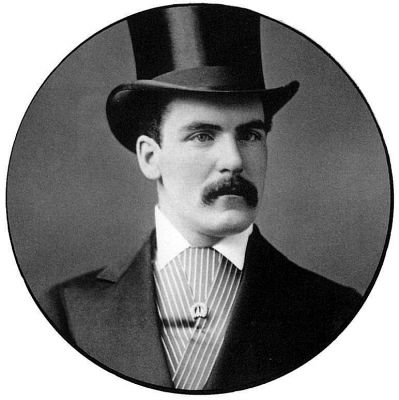by Sian Latham
The media, at the time of the murder was not trusted by the police and thus very little information was given to the papers by officials. Unlike nowadays, where the police use the media to help an investigation and provide clear evidence and information, any policeman at the time suspected of giving information to the media was removed from the case. As a result, the media coverage of the murders became over dramatized and designed to hype up the scare and interest of the case within the population. The media coverage was meant to sell papers, not tell the facts.
Casefile 5
Victim: Mary Jane Kelly
Date of Death: 9th November, 1888
Age: 25
 |
| Dr Thomas Neill Cream |
Mary Jane Kelly was found in her room, in Miller’s Court, at 10:45 am. The cause of death was a severed carotid artery, severed while the victim was laying on the right of the bed: she was moved to the left after death. The body had suffered grievous mutilation through the removal of organs, skin, the breasts; as well as incisions upon the face. The organs and breasts had been positioned around the body after removal. The time of death given by Dr. Phillips, who attended the scene, was of an early hour that morning. However, in Kelly’s case two witnesses claim to have seen her at 8:30 and 10:00 that morning, after the time of death given by Dr. Phillips.
Kelly had been seen in the presence of several men on the evening of her death. At 11:00 pm she left the Britannia accompanied by a young, respectably dressed gentleman with a dark moustache. She is then seen with a ‘shabby man’, blotchy faced with a ‘carroty moustache’ at 11:45, a man she is witnessed saying goodnight to and then leaving his company. Kelly is then heard singing in Miller’s Court between 11:45 and 1:00 am the next day. At 2:00 am, Kelly is seen talking to a man of a pale complexion, with a dark moustache (turned up at the corners), dark hair and dark eyes: he reportedly had the appearance of a Jew. This is the last time Kelly is seen or heard before the discovery of her body. The door to her room was locked upon discovery.
Kelly’s background is confusing due to the accounts of her life contradicting each other depending on who the police approached. It does, however, appear that she was from Cardiff originally but with Irish ancestors. She was rarely drunk, yet when she was Kelly became abusive and loud. She worked as a prostitute in London and was liked by most when she was sober.
……………………………………………………………………………………………………………..
Suspect: Dr. Thomas Neill Cream
Suspected by: Theorists and the Media
Age at time of Murders: 38
Occupation: Abortionist (and known murderer)
At the time of the murders, Cream was not considered a suspect. He only became associated to the murders upon his, supposed, last words: “I am Jack…” He was hanged on the 15th of November, 1892, on the charge of murder. As the ‘Ripper Scare’ was still in force, many considered these last words to have been a confession by Cream. Besides the words the executioner claims to have heard, Cream’s murderous past also lent towards the public suspicion of his guilt. He has a suspected 7 murders to his name, mainly women but a man as well. He killed his victims through poisoning them.
Cream was never considered a suspect by police for several reasons. For one, though he was a murderer, his preferred killing method was the poisoning of clients. Secondly, he was meant to be serving a jail sentence at the time, after being charged with the murder of a male client. However, many theorists and the media at the time, found ways around this fact. A theory that developed was one of Cream having a double, thus allowing him to commit the Whitechapel murders while also serving a jail sentence. The evidence for this, it is claimed, is his refusal to plead guilty upon his arrest for bigamy as he claimed to have been serving a jail sentence in Sydney at the time the crime was committed. The jail in question was asked if there was a man fitting his description in residence and they confirmed that there was. It is believed that the two men used the same name and used each other’s terms of imprisonment as alibi’s for their crimes.
His handwriting also matched that found on two of the Ripper Letters.
……………………………………………………………………………………………………………..
The Media:
The media, at the time of the murder was not trusted by the police and thus very little information was given to the papers by officials. Unlike nowadays, where the police use the media to help an investigation and provide clear evidence and information, any policeman at the time suspected of giving information to the media was removed from the case. As a result, the media coverage of the murders became over dramatized and designed to hype up the scare and interest of the case within the population. The media coverage was meant to sell papers, not tell the facts.
Comments
Post a Comment
Comments with names are more likely to be published.